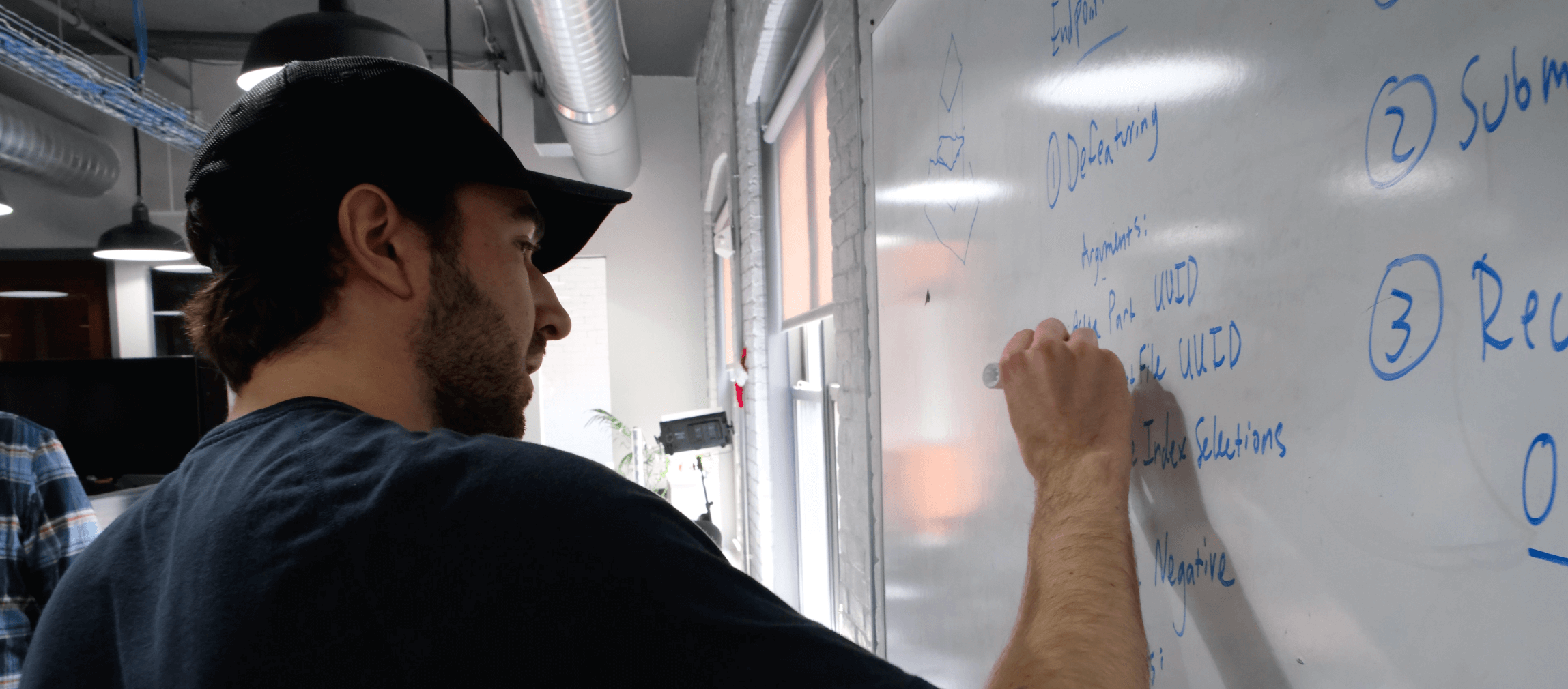
Under the Hood: Our Philosophy on Computational Geometry
Paperless Parts leverages the geometry from CAD models to streamline the quoting experience for contract manufacturers. We built this technology with a philosophy to deliver fast, impactful solutions that we can mature over time with heavy file traffic and iteration. Many customers have questions about how this experience is provided, so in this blog post, I’ll be diving into our philosophy on computational geometry and why it’s the driving force behind everything you see in Paperless Parts.
The Power of File Consumption
A fundamental piece of Paperless Parts’ technology is consuming uploaded files provided by a request for quote. The outcomes of this upload process include:
- Secure file storage
- The ability to interact with the raw data stored in the files
- Extraction of geometric information critical for costing
These outcomes streamline your process for quoting any job and inform many of the other actions you’re completing within Paperless Parts.
One of the greatest challenges posed by file consumption is allowing for large amounts of variation in data. Paperless Parts has seen almost two million unique files uploaded, and we strive to offer the same support to every file upload we see, regardless of type, size, complexity, originating software, or industry.
We see files designed for everything you could imagine; no two parts are the same. We interpret geometries from dozens of different CAD systems, meaning we occasionally encounter geometric situations that we have never considered before.

Luke working on a prototyping project at the Paperless Parts Spring 2022 Hackathon.
Example
A simple example scenario that most CAD designers have encountered is modeling hole features. The same final manufactured geometry can be designed the exact same way, yet different design softwares will output varying topology.
Let’s look at two images of identical hole features from a geometry perspective; they have the same depth, diameter, and location in the model.
In this first image, the hole feature is described using a single face that wraps around 360 degrees:

In this second image, the hole feature is described using two split cylindrical faces, each 180 degrees.

Although both of these representations are common, each adds breadth to the Paperless Parts hole detection algorithm (in the very early stages of our product development, the second split representation would not have been detected properly!).
Hole detection is just one simple type of geometry that can be represented in different ways. There are lots of other complex types of geometric features that Paperless Parts can reliably identify, even with variations in file topology. These capabilities are largely due to the fine tuning and iterations made to our geometric analysis as we have seen more and more files and representations. This process is something we will continue to do as new geometric functionality is introduced and as millions more files are analyzed by Paperless Parts.
How Geometry Informs Our Product
We welcome any new geometric situations as a challenge worth conquering. Solving an “edge case” caused by just one of the nearly two million files we have seen means that the next time we encounter a similar geometry, the product will handle it with ease. We are always working to improve our product with our users in mind.
Changes in the Paperless Parts source code can be adopted immediately and seamlessly by all users. This is one of the many advantages of being a web application; we have the ability to iterate and release updates to our product frequently. So far this year, Paperless has averaged about 3.5 releases per week.

Luke (second from left) working alongside fellow engineers Matt Sordello (left) and Reid Lance (right).
Every file uploaded and analyzed strengthens Paperless Parts’ file processing abilities. Our percentage of fully supported file uploads has been increasing since day one, and we’re now quickly approaching one hundred. We have systems in place for both automatic detection of processing failures and a pipeline for employees and users to raise potential issues to our engineering team. When either of these events occur, an engineer will spend time diagnosing the issue, developing a solution that incorporates this new case, and deploying the solution to our users. Sometimes this entire process can take less than an hour.
The Business Impact
At the end of the day, what matters most is the value our customers find as a result of using Paperless Parts. Here’s where customers feel the most impact on their shops:
- Increased speed to quote
- Improved win-rates
- Ability to quote at a higher volume
- Greater scalability
- More consistency with quotes
- Expanded revenue streams
- Stronger data security
- More secure collaboration
Our customers simultaneously improve our product through valuable insights and diverse file traffic. The computational geometry team has made a commitment to respond and improve the robustness and effectiveness of our geometric analysis whenever and wherever possible. Knowing that our product’s foundation is further strengthened by both customer use and the dedication of the Paperless Parts team is incredibly exciting for me.
Want to see our geometric analysis in action? Check it out on a free demo of our platform today.
—
Luke Duros is a Senior Computational Geometry Software Engineer at Paperless Parts. He has been a member of the Computational Geometry team for 3 years, beginning his career immediately after graduating from Trinity College, where he earned a BS in Mechanical Engineering. Luke resides in Boston, MA.

